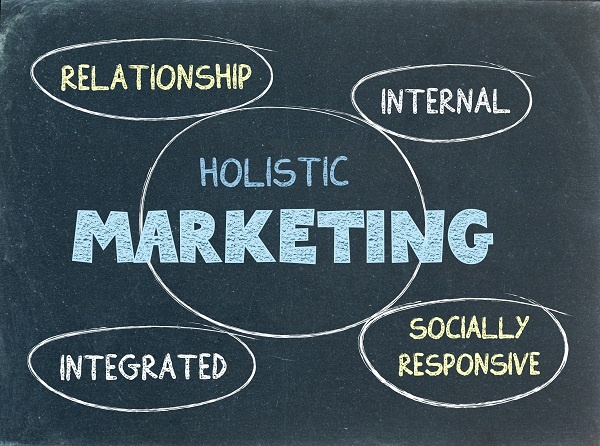
by Francois Muscat | Nov 5, 2018 | Instagram, Social Media Marketing
The launch of Instagram Stories has been a game changer, but many brands report that fewer people are engaging with their feed photos since this launch. This means that marketers need to use videos along with photos if they want to effectively engage with their audience on Instagram.
The same rules that apply for photos also apply for videos on Instagram: you have to capture users’ attention within the first three seconds. If you are doing a video, you might want to consider adding text on top of the video or make sure that your video’s thumbnail is really interesting. When you record a video for Instagram, you have the option to scroll to the “Cover” option, move through your entire video and choose an interesting shot for your thumbnail picture.
If you have the ability to edit videos outside of Instagram and import it into Instagram, we highly recommend doing this. This way, you can film a video and include something like text or a well-designed heading to draw people into your video.
Solve a Problem
Your Instagram video should identify a problem that your target audience faces and show how your product or service can solve that problem. When you are able to solve a problem that a potential client faces, you will create an emotional bond with them. When they are ready to make a purchase, they will be spending their money with you.
Need help with your social media marketing? Then contact WSI OMS today.

by Marelise da Silva | Sep 26, 2018 | Social Media Marketing
Up until recently, everyone born between the years 1980 and 2004 were lumped together under the banner ‘Millennials’. While grouping a certain demographic by age does assist in some predictions, it is becoming increasingly obvious that Millennials are comprised of four separate groups. Each group is affected by different socio-economic factors and as such have different outlooks. A digital marketing campaign aimed at anyone between the ages of 13 and 35 needs to incorporate elements of experimental marketing to fully reach these four distinct sub sections of the millennial generation.
The Struggling Aspirationals
The Struggling Aspirationals form the largest part of the four subsections of Millennials. Their forward thinking and globalist view identify this group. They are ‘green’, fit and healthy, have some form of employment and standard source of income, but often find themselves in financial trouble.
This group is ambitious and seeks to raise their station in life. They are most open to digital marketing as they form part of the interconnected superhighway of information that is the internet, but they are thrifty and aware of most kinds of traditional advertising.
Experimental advertising ignites their interest and will lead them further than old school banner adverts.
The Comfortable TV Watchers
This group is the polar opposite of the Struggling Aspirationals. They are content with their station in life and act as consumers of content. They can be targeted by most TV adverts, as this is likely their preferred medium. A small percentage of the millennial generation, they lack inspiration and likely subsist on welfare to meet their needs.
The Active Affluent
The most accomplished of the millennial groups, this section is also known as the “I’ve Arrived”. With steady jobs and disposable incomes, this group enjoys travelling, buying assets and starting families. Likely, they form part of the first of the millennial group and are in their late 20s or early 30s.
The Active Affluent sees their lifestyle as a means by which to measure their status and accomplishments.
The Successful Homeowners and Struggling Dependants
The final group of the Millennial generation exists in juxtaposition with itself. In the US, this group is comprised of the ‘Successful Homeowners’. This group is the most affluent and successful of the Millennials, whether it is by inheritance or high income. In South Africa, this final portion is comprised of rural Millennials with low confidence and poor prospects.
Each of these groups has some form of spending power and will be swayed if you communicate with them in the right way. Contact WSI OMS for social media marketing and content marketing services.

by Marelise da Silva | Aug 22, 2018 | Social Media Marketing
One of the problems that headlines have is that they need to serve multiple audiences. It’s not just about ranking in search engines. We also need to serve our website visitors well. And, you also want the headline to be catchy on social media.
In the SEO world of headline writing, you will be trying to rank well for different search terms as well as earn a high click-through rate, you need to earn links, and you want engagement. On the social media side, you are using a headline to earn amplification, which can mean trying to tell as much of a story as possible. You’re looking for clicks, comments and engagement on the post.
For the site itself, you are trying to drive the right visitors. You want to deliver on your promise and convert readers to clients. You don’t want people to associate your content with clickbait that doesn’t lead to valuable content.
Keywords for SEO can be really boring for social media headlines. If you try to keyword stuff, then your social media engagement and re-sharing may go down, even if the headline earns you more traffic from organic search traffic.
Your first step is to determine what platform your primary traffic driver is. If your primary traffic driver is social media, then you need to create a sense of mystery and focus on writing a more compelling heading than you would if your primary traffic driver is Google traffic. Experimenting with different headings and keyword variations, while committing to keeping your headlines honest, engaging and fun, is the best way to go.
Need help with your content marketing or social media strategy? Then contact WSI OMS today.

by Marianna Muscat | Aug 21, 2018 | Social Media Marketing
What is a good step-by-step procedure to follow when you have made an error in judgement on social media?
When you make a mistake on social media, you have to own it. You have to take responsibility for it and avoid getting defensive.
If it is a really bad error in judgement (such as something that is discriminative), then you should apologise and remove the post. If it is an error in judgement that was intended to be humorous but was in poor taste, you may be able to save face by poking fun at yourself.
Chrysler, for example, had a social media incident where their social media person accidentally posted on the company’s platform instead of his own. He said, “I find it ironic that Detroit is known as the motor city and yet no one here knows how to f***ng drive.” This was intended for his own followers instead of Chrysler’s followers.
Chrysler took the error very seriously and they ended up firing the social media person. They also apologised to their followers and told them that their account was compromised on that day and that they are taking steps to resolve the issue.
The American Red Cross had a similar situation. A status update reading the following was posted on their timeline: “Ryan found two more 4 bottle packs of Dogfish Head’s Midas Touch beer…when we drink we do it right #gettingslizzerd.”
The Red Cross took the post in their stride. The organisation posted the following to their followers: “We have deleted the rogue tweet but rest assured the Red Cross is sober and we have confiscated the keys.”
The situation turned into an impromptu blood drive, which was a good outcome for the company.
While mistakes on social media happen, it does not always have to be a train smash. Apologising and dealing with the situation appropriately can help you save face and even make your brand more human and relatable.
Need help with your online reputation management or social media strategy? Then contact WSI OMS today.

by Francois Muscat | Aug 20, 2018 | Social Media Marketing
Do you have to spend as much time working on internal brand culture as you would on social media marketing?
By now, most brands know that they need an online presence and a social media following. Many companies, however, aren’t dedicating enough time to their internal marketing and brand culture.
To determine whether this should be a priority for your business, ask yourself what kind of company you are going to be. Are you going to stay in the old model of mass broadcast, one-way marketing where it’s all about command, control and compliance? Or are you going to focus on inspiring and involving your key stakeholders and employees?
To be that way, you have to transform the culture of your company and your people to think that way. Instead of talking ‘at’ customers, you want your employees to be engaged with customers. It would be impossible to achieve this goal if you aren’t focused on engaging your employees in a similar way.
The golden rule is to treat your employees the same way that you would treat your customers. As the social media generation grows up and joins the workforce, they will continue to demand this type of engagement with employers.
The first step you can take to achieve this is by involving all levels of employees in your digital marketing campaigns. Ask for ideas and get people from various parts of the business to contribute to all types of content. Not only will employees be more inclined to share your content on their networks, but they will have a vested interest in the content that you are publishing.
Need help with your website design or website development? Then contact WSI today.

by admin | Aug 10, 2018 | LinkedIn, Social Media Marketing
We have helped many people use the power of LinkedIn (see this example of Dr. Cheryl Potgieter) to connect with their ideal target audience. Whether you are an established thought leader in your industry or you whether you just recently started working in a new niche, you need to ensure that your LinkedIn profile is:
- Attention-grabbing, and
- That it explains the value you can bring to a client’s business.
Here is advice on how professionals like Dr. Cheryl Potgieter can go about creating a winning LinkedIn summary:
Write what the ultimate goal of your job is. If you are a software developer in the financial industry, write how you believe digital disruption and technological change will help companies differentiate themselves in the market. Say that you are committed to advancing the field of software development and engaging in meaningful conversations on how the industry can become more agile, for example.
Your passion is what makes you tick. If you are a teacher, you can say that you love facilitating those ‘A-Ha’ moments when a learner understands how to solve a complex problem. If you are a Doctor, you could say that helping people live their best lives is what keeps you going every day.
What do you promise clients? An accountant can promise that they will ethically guide a client to efficiently navigate the tax landscape and meet all their regulatory requirements while looking for opportunities where growth may exist for their business.
This can give readers the information they need to resonate with you. You could, for example, write about where you were in life before you found your true calling. Coach Lisa Berndt’s summary reads, “I was sitting in a New Zealand forest at midnight, wearing sunglasses and catching moths. It was not where I wanted to be. Although midnight light trapping was never my favourite part of being an entomologist, I stayed committed to my path as a scientist for another six years. Then I realised my true passion was…”
Do you need help to create your best LinkedIn summary like Dr. Cheryl Potgieter. Then contact us today.







